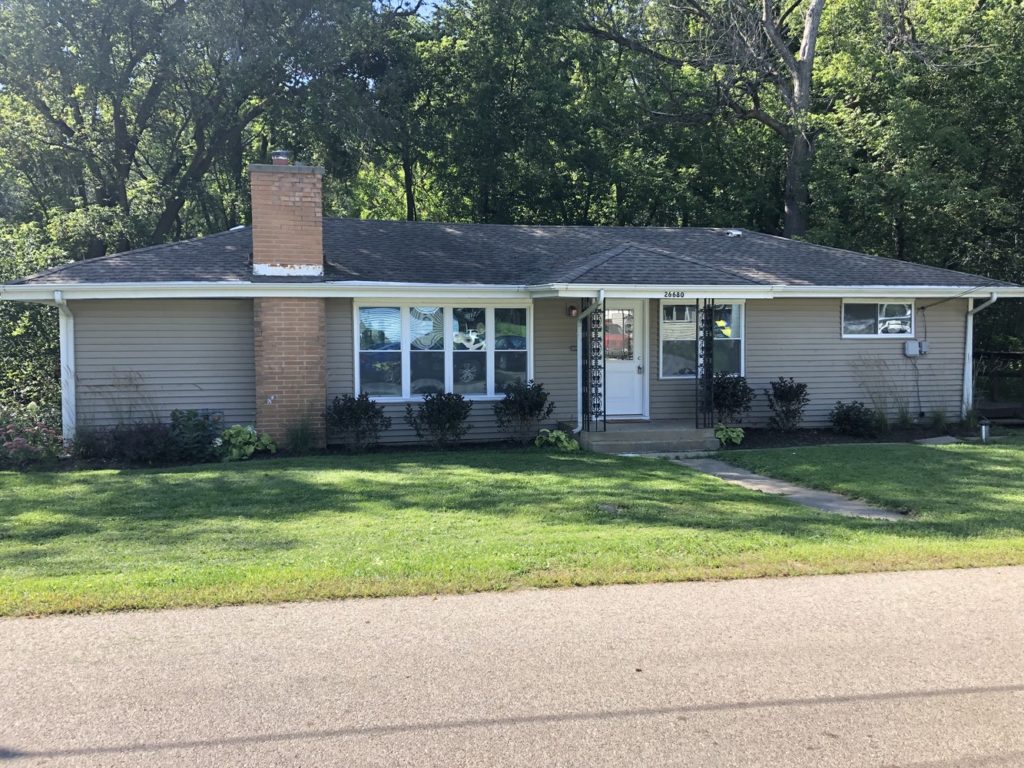BRRRR – Buy, Rehab, Rent, Refinance, Repeat
This post is going to be a little bit long—but I want to give you a real life case study of a deal I recently did—and show exactly how I made $40,000 on this investment.

For those reading this and are unaware, BRRRR is an acronym for:
Buy, Rehab, Rent, Refinance, Repeat
FULL DISCLOSURE: While case studies can be helpful, you are not going to be able to perfectly copy what I did. Every property is unique, every location is unique, and your skills are unique.

1) Buy
So when I am looking for a rental I created a template I stick to and I don’t veer from much. 3 bed, 1 bath ranch, no basement and dirty. VERY dirty. The smell of cat pee and mold are like gold to me. Both are easy fixes if you know what you are doing and both can equate to profits.
It was in early spring of 2019, and in typical fashion, I was checking the latest email to come from my real estate agent with new listings in my area. This property immediately stood out to me because it was located in the town on Antioch Illinois and was listed below $100,000, which is unusual. Most properties in this town sell between $120,000 and $200,000—so my interest was immediately piqued.
Of course, just because a property is cheap does not mean it’s a good deal; usually, it means there is something really wrong with the house. However, every once in a while, you stumble across a true diamond in the rough, which this property proved to be.
After looking at the photos and description in the email, I ran some preliminary numbers. At the time, I thought this house was worth around $125,000 if fully fixed up. The home didn’t appear to need a ton of work (see photos ), but it wasn’t without it’s own set of challenges.
Among the repairs needed were:
- New paint inside
- Refinish the hardwood flooring throughout
- New or Painted cabinets
- New appliances
- New exterior doors and patio door
- Some drywall repairs
- General landscaping
My original budget was $10,000 to complete all these items, and I planned on doing none of the work myself—I would hire it all out.
But first, I needed to finance this property.
As I mentioned earlier, when doing a BRRRR property, there are actually two different financing methods involved.
- The initial purchase (with Hard Money)
- The refinance
Right now, we’re going to focus on #1—the initial purchase.
- Purchase Price: $85,000
- Loan Down Payment: $25,000
- Closing Costs: $4,491.00
- 10.5% interest only payments for 12 month term
- Repairs budget: $10,000
- Total Potential Cash Outlay: $39,491
- Total into the property: $99,491
Remodel

Here is a breakdown of what the basic cosmetic remodel intailed.
- Exterior:
- Exterior siding repair & power washing $250
- Exterior deck repair and stain $150
- Landscaping & yard clean up $800
- Roof and gutter repair $250
- Interior:
- Finish electrical: $650
- Finish plumbing : $350
- HVAC cleaning and inspection: $175
- Interior painting: $1,000
- Hardwood floor refinishing $1,000
- New cabinets & knobs $850
- New granite countertops: $1,500
- New appliances $1,800
- New Exterior doors $500
Total remodeling labor and material costs $9,275.00



Rent
This house rented super fast! I market it on 2 websites. Turbotenant.com and Cozy.co. Both are distribution sites that send your listing to websites like Realtor.com, Zillow, Facebook, ect. These websites also have a built in background check system and a credit check system where the prospective tenant can pay direct with them and you receive them back in real time. The cost is $35-$45.
Typically I hold 2 open houses a week and ask the prospective tenants to come between a 3 hour window on Wednesday and Friday from 3-6pm. On this open house we had over 30 people walk the house. 3 applications and a signed lease by the end of the day. Here is how the rental breaks down
- Rental Income: $1,250
- Loan Payment: $525.00 (10.5% interest-only payments)
- Taxes: $250/month
- Insurance: $50/month
- Total Fixed Expenses: $825.00 per month.
- Base Cash Flow: $375.00 per month.
Of course, that wasn’t all. As any landlord knows, there are more expenses than just the “fixed” monthly expenses I outlined above. Although the tenant paid for his own utilities, I still have to pay for things like repairs, capital expenditures, management, etc.
Refinance
As with all refinances, the bank wants to see a lot of information about me and my business & personal finances, such as:
- Credit report
- Loan application
- Personal tax returns for two years (if going with a conventional loan)
- Business tax returns for two years
- Profit/loss statements for all my properties
- My favorite kind of breakfast cereal (Frosted Flakes)
- My underwear color (grey?)
- My IQ
- Blood type
- And whatever else they can demand!
Now comes the most important part of this BRRRR strategy, something that if we messed up could cause a lot of issues —the after repair value (ARV.) The ARV is an acronym for AFTER REMODELED VALUE simply the fair market value of the property after it’s been fixed up.
As is typical with rental property refinances, the bank was only going to let me get a new loan that is 75% of the new, appraised value. So, if the property only appraised for $100,000, they would only give me a new loan of $75,000. Yikes.
And this is the biggest danger of the BRRRR strategy, so let’s take a moment to discuss this more in-depth.
Like house flipping, the BRRRR strategy relies heavily on the after repair value (ARV). You need to have some serious equity in the property after you fix it up, or you’ll struggle getting the house refinanced. So how do you ensure you get the ARV right? One word: comps. (OK, that’s not even a full word. It’s short for “comparable,” and it basically means “your house is going to be worth what other similar houses have sold for.”) The easiest way to get “comps” is to talk to an experienced real estate agent, who can either flat-out tell you the ARV (if you trust them) or they can provide sales data for the area and you can do the math yourself.
At this point, I bought the property for $85,000, and I put $9,275 of repairs. I also had a few thousand dollars in closing costs, so my total “in” for the property was $99,491.
The appraisal came back at $125,000, thus the bank agreed to fund $93,750—enough to pay back my lender ($60,000), pay back myself for the money I put in ($33,750), and cover all the closing costs for the new loan.
My new loan was just $836 a month, including taxes and insurance. For a new cash flow amount of $414.00
Repeat
This is where the final “R” comes in—”repeat.” While this “R” is optional (some people don’t want to do it again), the benefit of the BRRRR strategy is the ability to get your money (and your “short-term lender’s” money) back so you can do it again and again and again, as much as you want.

